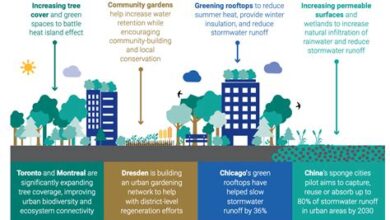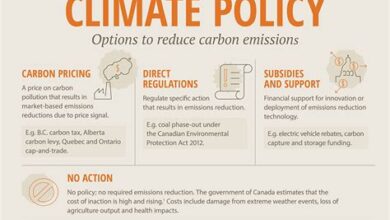Government Strategies for Economic Recovery Post-COVID-19

Stay informed on fiscal policy, monetary adjustments, investment promotion, workforce retraining, and small business support for a competitive advantage in the market.As the world slowly begins to recover from the impact of the COVID-19 pandemic, governments are faced with the monumental task of jumpstarting their economies. In order to achieve this, various strategies and initiatives need to be put in place to ensure a sustainable and effective recovery. This blog post will delve into the different approaches being taken by governments around the world to stimulate economic growth and stability in the post-COVID-19 era.
From fiscal policy initiatives to monetary policy adjustments, investment promotion programs to workforce retraining initiatives, and support for small businesses, there are numerous avenues that governments are exploring to rebuild their economies. By understanding and analyzing these strategies, we can gain insight into the potential challenges and opportunities that lie ahead as we navigate the complex terrain of economic recovery. Join us as we explore the various government initiatives and programs aimed at reviving and strengthening economies in the wake of the COVID-19 crisis.
Fiscal Policy Initiatives
As the global economy continues to grapple with the aftermath of the COVID-19 pandemic, governments around the world are implementing various fiscal policy initiatives to stimulate economic recovery. These initiatives include measures such as increased government spending, tax cuts, and direct financial assistance to individuals and businesses.
One key aspect of fiscal policy initiatives is the adoption of expansionary fiscal policies, which involve increasing government spending and reducing taxes to boost aggregate demand. By injecting more money into the economy, governments aim to encourage consumer spending, business investment, and overall economic activity.
Furthermore, some governments are also prioritizing targeted fiscal measures to support specific sectors that have been disproportionately impacted by the pandemic, such as healthcare, tourism, and small businesses. These measures may include industry-specific grants, subsidies, and loan programs to help affected businesses recover and thrive in the post-COVID-19 landscape.
Monetary Policy Adjustments
Government Strategies for Economic Recovery Post-COVID-19
In response to the economic challenges posed by the COVID-19 pandemic, governments around the world have been implementing monetary policy adjustments to stimulate economic recovery. Central banks have taken various measures such as lowering interest rates, increasing money supply, and enacting quantitative easing programs in order to encourage borrowing and spending in the economy. These policy adjustments aim to provide relief to businesses and households facing financial strain and to incentivize investment and consumption to boost economic activity.
By lowering interest rates, central banks aim to decrease the cost of borrowing, making it more attractive for businesses and consumers to take out loans for investment or spending. This can stimulate economic growth by increasing overall spending in the economy and fostering business expansion and job creation. Additionally, increasing the money supply and implementing quantitative easing programs can inject liquidity into the financial system, making it easier for banks to lend money and support credit availability, thus easing financial conditions for businesses and individuals.
Furthermore, these monetary policy adjustments can also impact exchange rates, international trade, and inflation. Lowering interest rates may lead to a depreciation of the domestic currency, making exports more competitive and supporting the growth of export-oriented industries. However, it may also contribute to higher inflation, potentially affecting the cost of living for households. Therefore, central banks must carefully consider the trade-offs and potential consequences of these policies as they aim to support economic recovery in a post-COVID-19 landscape.
Investment Promotion Programs
Investment Promotion Programs play a crucial role in stimulating economic growth and attracting new investments. These programs are implemented by the government to create a conducive environment for local and foreign investors, thereby fostering economic development. By offering incentives, tax breaks, and streamlined processes, investment promotion programs aim to attract businesses from various industries, leading to job creation and overall economic expansion.
Moreover, investment promotion programs focus on showcasing the potential and benefits of investing in a particular region or country. This is often done through marketing campaigns, trade fairs, and investment forums to highlight the opportunities available and the support provided by the government. By promoting the advantages of investing in a specific location, these programs aim to increase the flow of capital and drive economic progress.
Additionally, investment promotion programs often involve partnerships with industry associations, economic development agencies, and other stakeholders to provide comprehensive support and guidance to potential investors. These partnerships help in identifying investment opportunities, addressing barriers to entry, and facilitating the establishment of new businesses, ultimately contributing to economic recovery and sustainability in the post-COVID-19 era.
Workforce Retraining Initiatives
As the world economy recovers from the impact of the COVID-19 pandemic, governments are implementing workforce retraining initiatives to address the changing needs of industries. These initiatives are aimed at providing opportunities for individuals to acquire new skills and knowledge, in order to meet the demands of emerging job markets. With the rapid shift towards digitalization and automation, there is a growing need for workers to upskill or reskill to remain competitive in the job market.
One of the key components of workforce retraining initiatives is the collaboration between government bodies, educational institutions, and private sector organizations. By working together, these stakeholders can identify the specific skills that are in demand and develop training programs that are aligned with industry needs. This collaboration ensures that the retraining programs are relevant and effective in preparing individuals for the jobs of the future.
Furthermore, to encourage participation in these retraining programs, governments are providing financial support and incentives to both individuals and employers. This may include subsidies for course fees, tax credits for hiring retrained workers, or grants for companies to establish in-house training programs. By offering these incentives, governments are not only investing in the future employability of their citizens, but also in the overall competitiveness of their economy.
Support for Small Businesses
The COVID-19 pandemic has had a severe impact on small businesses around the world. In response to this, many governments have implemented support programs to help small businesses recover and thrive in the post-pandemic economy. These programs include financial assistance, tax relief, and access to low-cost loans to help small businesses stay afloat during these challenging times.
In addition to financial support, many governments have also put in place training and advisory services to help small business owners adapt to the changing economic landscape. These services provide valuable guidance on business planning, digital marketing, and online selling, all of which are essential for small businesses to stay competitive in the digital age.
Furthermore, governments have been working on policy initiatives to create a more favorable environment for small businesses. This includes reducing bureaucratic hurdles, streamlining regulatory processes, and encouraging innovation and entrepreneurship through various incentive schemes. These efforts aim to create a more conducive environment for small businesses to thrive and succeed in the post-COVID-19 era.





